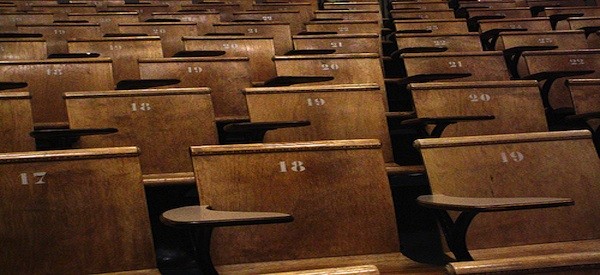Classroom Authority and Twitter

An interesting aspect of Twitter's recent surge in popularity has been how educators have embraced the technology, not just for networking and personal communication, but also in the classroom. Many teachers have found Twitter to be a helpful tool for accessing the backchannel—the discussion students are having about what is going on in the classroom—in real time. In a recent Chronicle of Higher Education article, Jeffrey R. Young interviewed two teachers who use Twitter in large lecture courses, projecting students' Twitter posts in the classroom live. Experiments like these frighten many instructors. As Young puts it: "Opening up a Twitter-powered channel in class…alters classroom power dynamics and signals to students that they're in control. Fans of the approach applaud technology that promises to change professors' role from 'sage on the stage' to 'guide on the side.' Those phrases are familiar to education reformers, who have long argued that colleges must make education more interactive to hold the interest of today's students."
While adopting a technology merely as a means of capturing the attention of easily distracted youth is perhaps not the best reason for doing so, most of the criticisms of classroom Twitter use in Young's article focus on his first observation: that the software shifts authority away from the teacher to the student. Young asks Sugato Chakravarty, a professor profiled in the article, does the system shift "too much control to students?" This question encourages us to look harder at what control in the classroom is, and how much could be "too much" for students to have?
In the U.S., classroom authority typically comes from the top down: the teacher knows all, and imparts that knowledge to the student. This hierarchy is reinforced by the physical design of large lecture spaces: rows of chairs arranged in tiers, focused on a central point at the front of the room. The idea that the classroom could be structured differently is so remote that in most cases these chairs are literally bolted to the floor. In many courses, particularly large lecture courses, there is very little room for knowledge or information to be shared from the bottom up—from student to teacher—and even sharing knowledge from student to student is severely restricted to spaces outside the classroom and in special situations.
This top-down authority structure, the one that Young is concerned Twitter use will challenge, is in fact a theory of knowledge: the teacher has something worthwhile to say, and students do not. Framing this discussion around control and who has it sidesteps the crucial educational concern over what students are learning.
Consider two of the examples in the article, the student who tried to cheat on a quiz, and the discussion about insurance rules regarding marriage. First, neither of these examples are new: teachers have dealt with cheating and classroom clowning forever. However both situations, as they are described, seem to lead to learning on the part of the students. What student in that classroom will ever forget what they learned about insurance rules regarding marriage?
The theory of knowledge embodied in top-down classroom structures automatically excludes certain genres of communication, such as humor, from learning. In short, it takes many of the natural features of learning and knowledge creation and throws them out the door. This is particularly worrisome because it would seem to also exclude essential media skills, such as play, performance, multitasking, and making use of collective intelligence.
The field of Composition Studies has been discussing the use of digital communication in the classroom since the late '80s. As a composition theorist, I have had a lot of experience using digital communication in the classroom, both as an instructor and a student. Like Prof. Chakravarty, I've had students who essentially never speak in the classroom open up in a forum post.
While classroom-based chats can sometimes seem like a "disaster" as noted in Young's article—particularly when online arguments devolve into flame wars (see Lester Faigely's Fragments of Rationality for a thoughtful discussion of one such disaster), in my experience these events are always an opportunity for teaching. In Young's article, Prof. Monica A. Rankin describes how her "students began an argument on Twitter" that she called "nonproductive and nonacademic." It is at moments like these that learning happens. What better way is there to teach students what a productive argument looks like, or how the guidelines of academic argumentation can be beneficial outside of the classroom?
I wouldn't argue that Twitter or other digital tools should be the only means of classroom communication, and they certainly aren't perfect—like all tools, they have their benefits and drawbacks. However, if used effectively, tools that allow students to be more active and concerned participants in their own learning should be essential features of 21st century classrooms.
Comments